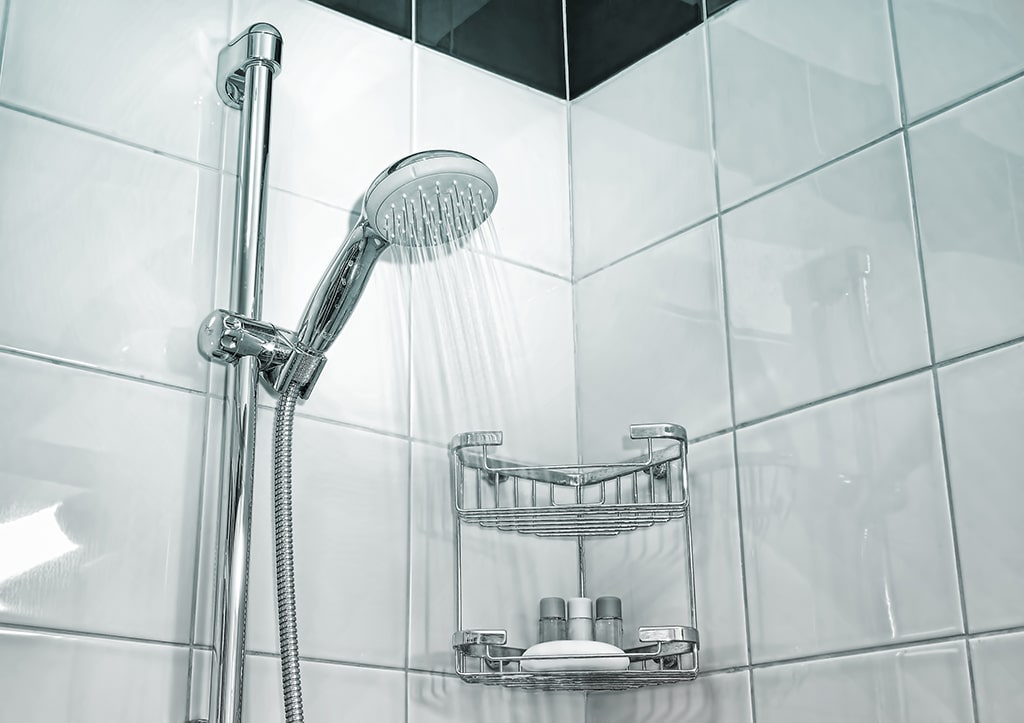
Why You Need Whole-House Tankless Water Heaters
Have you ever wondered why so many homeowners are switching to tankless water heaters? Choosing the right water heater for your home is crucial for your comfort, energy bills, and the environment.
As technology advances, tankless water heaters have become a popular choice for those seeking efficiency and reliability. Unlike traditional water heaters that store hot water in a tank, tankless systems heat water only when you need it, providing an endless supply of hot water without wasting energy. This on-demand heating method ensures you get hot water instantly and efficiently, making tankless water heaters an excellent investment for modern households.

What is a whole-house Tankless Water Heater?
A whole-house tankless water heater is a modern, efficient system designed to provide hot water on demand to an entire home. Unlike traditional water heaters that store and heat a large tank of water continuously, a tankless system heats water only when needed.
This approach eliminates the standby energy losses associated with maintaining a tank of hot water, leading to significant energy savings.
A whole-house tankless water heater operates by using high-powered burners to rapidly heat water as it passes through a heat exchanger. When a hot water tap is turned on, cold water travels through a pipe into the unit, where gas or electric burners heat the water instantly. This process ensures a continuous supply of hot water, which is delivered directly to your faucets, showers, and appliances.
Differences from Point-of-Use Units
While both whole-house and point-of-use tankless water heaters offer on-demand hot water, they serve different purposes. Point-of-use units are designed to supply hot water to a single fixture or appliance, such as a sink or a shower, and are typically installed close to the point of use.
In contrast, a whole-house tankless water heater is a centralized system capable of providing hot water to multiple fixtures simultaneously throughout the home. This makes whole-house systems ideal for larger households or homes with high hot water demand.
Understanding the functionality and benefits of a whole-house tankless water heater can help you make an informed decision about upgrading your home’s water heating system. In the next section, we’ll delve into the specific advantages these systems offer and why they might be the perfect choice for your household.
Benefits of whole-house Tankless Water Heaters
Investing in a whole-house tankless water heater brings numerous benefits that enhance comfort, efficiency, and sustainability in your home. Here, we explore the key advantages of these modern water heating systems.
1. Energy Efficiency
One of the most significant benefits of whole-house tankless water heaters is their energy efficiency. Traditional water heaters continuously heat and reheat water stored in a tank, leading to energy losses even when hot water is not being used.
In contrast, tankless water heaters activate only when you need hot water, reducing energy consumption. According to the U.S. Department of Energy, tankless water heaters can be 24-34% more energy-efficient for homes that use 41 gallons or less of hot water daily.
2. Unlimited Hot Water Supply
A tankless system provides a continuous supply of hot water, ensuring you never run out even during peak usage. Whether you’re taking back-to-back showers, running the dishwasher, and doing laundry simultaneously, a tankless water heater can handle the demand. This feature is particularly beneficial for large families or homes with high hot water usage.
3. Space-Saving Design
The compact size of tankless water heaters is another significant advantage. Traditional water heaters can be bulky, taking up valuable floor space. Tankless units, on the other hand, are much smaller and can be mounted on a wall, freeing up space for storage or other uses. This space-saving design is ideal for homes with limited storage areas.
4. Environmental Impact
Tankless water heaters contribute to a greener home by reducing energy consumption and greenhouse gas emissions. Their efficient operation means less energy is required to heat water, which can result in lower carbon dioxide emissions. Additionally, because they typically last longer than traditional water heaters, tankless systems contribute less waste to landfills.
5. Longevity and Durability
Tankless water heaters generally have a longer lifespan compared to traditional tank water heaters. While a typical tank water heater might last 10-15 years, a tankless model can last up to 20 years or more with proper maintenance. This durability translates into long-term savings and reduced environmental impact from fewer replacements.
The combination of these benefits makes whole-house tankless water heaters an attractive option for homeowners looking to upgrade their water heating systems. They offer a reliable, efficient, and sustainable solution to meet modern household demands.
How Does a Tankless Water Heater Work?
Understanding how a tankless water heater operates can help you appreciate its efficiency and reliability. These advanced systems use modern technology to provide on-demand hot water without the need for a bulky storage tank.
Basic Operation Principles
At the core of a tankless water heater is the concept of heating water only when it’s needed. When a hot water tap is turned on, cold water travels through a pipe into the unit.
Here, either a gas burner or an electric element heats the water instantly. Because the water is heated on demand, there is no need to store hot water in a tank, eliminating standby heat loss and increasing efficiency.
Heating Elements and Flow Sensors
Tankless water heaters are equipped with powerful heating elements or burners and sophisticated flow sensors. The flow sensor detects when water is being drawn from the hot water tap and signals the heating elements to activate.
The water flows over the heating element, reaching the desired temperature almost immediately. This process ensures that you have a continuous supply of hot water as long as you need it.
The system also includes temperature sensors to maintain a consistent water temperature and prevent scalding. Some advanced models feature modulating burners that adjust the flame size based on the flow rate and temperature setting, optimizing energy usage and comfort.
Advantages Over Traditional Water Heaters
- Performance Differences
Unlike traditional water heaters that can run out of hot water, tankless systems provide a limitless supply. This is particularly beneficial for large households or homes with high hot water demands.
- Cost Analysis Over Time
While the initial cost of a tankless water heater may be higher, the long-term savings on energy bills can offset the upfront investment. The efficiency of tankless systems means lower utility bills and less energy waste.
- Installation Differences
Tankless water heaters are compact and can be installed in various locations, including on walls or in small spaces. This flexibility contrasts with traditional water heaters, which require significant floor space and specific installation conditions.
Energy Savings and Environmental Benefits
Tankless water heaters are designed to be highly efficient. They eliminate the energy losses associated with heating and reheating water in a storage tank, which can account for a significant portion of a home’s energy usage.
By heating water only when needed, tankless systems reduce overall energy consumption, leading to lower utility bills and a smaller environmental footprint.
Understanding the basic operation and components of a tankless water heater highlights why these systems are becoming a popular choice for homeowners. Their ability to provide continuous hot water, coupled with significant energy savings and environmental benefits, makes tankless water heaters an excellent investment for modern households.
How to Choose the Right Size Tankless Water Heater
Selecting the right size tankless water heater for your home is crucial to ensure it meets your hot water demands efficiently. The correct size depends on several factors, including household size, water usage patterns, and the number of fixtures requiring hot water simultaneously. This section provides a guide to help you determine the appropriate tankless water heater size for your needs.
Factors to Consider
- Household Size
The number of people in your household significantly impacts your hot water needs. A larger family will typically use more hot water, necessitating a higher-capacity tankless water heater. For instance, a family of four will require more hot water than a single occupant or a couple.
- Water Usage Patterns
Consider the typical daily hot water usage in your home. Do you often have multiple showers running simultaneously? Do you frequently use hot water for laundry and dishwashing? Understanding your peak hot water usage times will help you select a unit that can handle the demand without running out of hot water.
- Number of Fixtures
Identify the number of hot water fixtures (showers, sinks, dishwashers, washing machines) that may be used simultaneously. This will help determine the flow rate (measured in gallons per minute, or GPM) needed from your tankless water heater. Different fixtures have different flow rates. For example, a shower typically requires 2.5 GPM, while a dishwasher might need 1.5 GPM.
Sizing Guidelines and Calculations
- Determine Peak Hot Water Demand
To size your tankless water heater, calculate your household’s peak hot water demand. Add up the flow rates of all fixtures that could be used simultaneously. For example, if you might have two showers (2.5 GPM each) and a sink (1 GPM) running at the same time, your peak demand would be 6 GPM.
- Temperature Rise Requirement
Consider the temperature rise needed, which is the difference between the incoming cold water temperature and the desired hot water temperature. For instance, if your incoming water temperature is 50°F and you want your hot water to be 120°F, the temperature rise is 70°F.
- Match the Unit to Your Needs
Once you have your peak demand and temperature rise, look for a tankless water heater that can meet these requirements. Manufacturers provide specifications on the maximum flow rate their units can handle at various temperature rises. Choose a model that matches or exceeds your calculated peak demand at the required temperature rise.
Choosing the right size tankless water heater involves understanding your household’s hot water needs and calculating the peak demand and temperature rise. By carefully considering these factors, you can ensure your tankless water heater provides efficient and reliable hot water for your home.
Installation Process for Tankless Water Heaters
Installing a tankless water heater involves several crucial steps that ensure the unit operates efficiently and safely. Whether you choose professional installation or a DIY approach, understanding the process can help you make an informed decision and ensure your water heater functions optimally.
Professional vs. DIY Tankless Water Heater Installation
- Professional Installation
Hiring a professional to install your tankless water heater is often the best choice, especially if you’re not experienced with plumbing or electrical work. Professionals have the expertise to handle complex installation tasks and ensure that all safety standards and local building codes are met.
- DIY Installation
For those with the necessary skills and tools, a DIY installation can be a cost-saving option. However, it requires a thorough understanding of plumbing, gas, and electrical systems. DIY installation is more feasible for electric tankless water heaters, as gas units involve more stringent safety and regulatory requirements.
Steps Involved in Installation
- Preparation
- Choose the Location: Select a suitable location for the unit, ensuring it’s easily accessible and has proper ventilation if it’s a gas unit.
- Gather Materials and Tools: Make sure you have all the necessary materials, including the tankless water heater, pipes, fittings, and any required electrical or gas components. Common tools include a pipe cutter, wrench, drill, and safety equipment.
- Disconnect and Remove the Old Water Heater
- Turn Off Utilities: Shut off the water supply, gas, or electricity to the existing water heater.
- Drain the Tank: Drain any remaining water from the tank.
- Remove the Old Unit: Disconnect the water, gas, or electrical connections and remove the old water heater.
- Install the New Tankless Water Heater
- Mount the Unit: Secure the tankless water heater to the wall according to the manufacturer’s instructions.
- Connect Water Lines: Attach the incoming cold water line and the outgoing hot water line to the unit.
- Install Gas or Electrical Connections: For gas units, connect the gas supply and ensure proper ventilation. For electric units, connect the electrical wiring according to local codes.
- Test the System: Turn on the water supply and check for leaks. Then, power the unit and test the hot water output to ensure everything is working correctly.
- Final Adjustments
Set the Temperature:
After the installation is complete, it’s essential to adjust the temperature settings on your tankless water heater to your preferred level. Most units come with a digital control panel that allows you to set the temperature easily.
The recommended temperature for most households is around 120°F (49°C), which is hot enough for everyday use but safe enough to prevent scalding. Adjusting the temperature to this level can help you conserve energy and extend the lifespan of your unit. If you have specific needs, such as hotter water for dishwashing, you can adjust the settings accordingly.
Inspect and Adjust:
Once the temperature is set, perform a thorough inspection of the entire system to ensure everything is functioning correctly. Start by checking all water connections for any signs of leaks. Tighten any loose fittings and ensure that all pipes are securely attached. Next, examine the gas or electrical connections to ensure they are properly installed and secure.
For gas units, check for any gas leaks using a gas leak detector or a soapy water solution. Turn on several hot water fixtures simultaneously to test the unit’s performance under load, making sure the water heats up quickly and maintains a consistent temperature. If you notice any irregularities, consult the user manual or contact a professional for assistance.
Whether you opt for professional installation or tackle it yourself, following the correct steps and ensuring all connections and settings are properly configured is essential for the optimal performance and safety of your tankless heater.
Recap
Investing in a whole-house tankless water heater is a smart choice for homeowners looking to enhance comfort, save on energy bills, and reduce their environmental footprint. These innovative systems provide endless hot water on demand, eliminate the inefficiencies of traditional tanks, and boast a longer lifespan.
Whether you’re tired of running out of hot water during peak times or looking to upgrade your home with sustainable technology, a tankless water heater offers unmatched benefits. Make the switch today and experience the convenience, efficiency, and reliability of a whole-house tankless heater. Your home—and the planet—will thank you.

FAQ
- How often should I descale my tankless heater?
It is recommended to descale your tankless water heater at least once a year. If you live in an area with hard water, consider descaling every six months to prevent mineral buildup that can reduce efficiency and damage the unit.
- Can I install a tankless water heater myself?
While it is possible to install a tankless water heater yourself, professional installation is often recommended. Professional installers ensure that the unit is set up correctly, meets local building codes, and operates safely.
- How long do tankless water heaters last?
Tankless water heaters typically have a longer lifespan than traditional tank water heaters. With proper maintenance, a tankless water heater can last up to 20 years or more, compared to the 10-15 years typical of tank water heaters.
- Why is my tankless water heater not providing hot water?
Several issues could cause a tankless water heater to stop providing hot water, including a lack of gas or electrical supply, mineral buildup, or a malfunctioning component.
- Are tankless water heaters environmentally friendly?
Yes, tankless water heaters are considered more environmentally friendly than traditional tank water heaters. They reduce energy consumption by heating water only when needed, leading to lower greenhouse gas emissions.
Have you considered switching to a tankless water heater in your home? Share your thoughts and experiences in the comments!




















